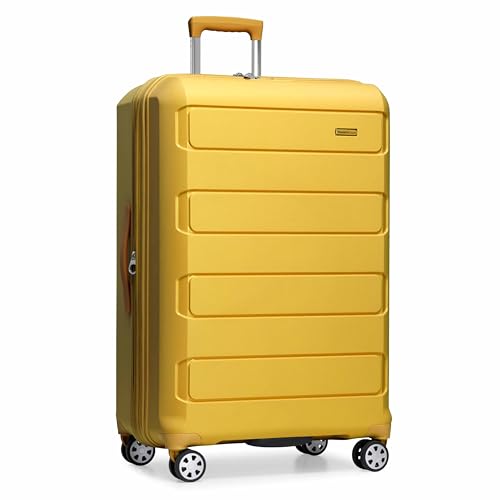



For travelers prioritizing resilience and lightweight attributes, choosing hard-shell travel carriers crafted from high-density plastics offers distinct advantages. One type excels in shock absorption and resistance to cracks, while the other shines with its ability to withstand abrasions and impacts, making it ideal for frequent journeys.
When weighing durability against weight, one material typically provides a lighter design without compromising structural integrity. For those who prefer a lightweight option that still guarantees excellent performance, opting for a product made from this particular synthetic can significantly enhance the travel experience.
On the other hand, for buyers focused on long-term durability and overall robustness, alternatives made from an alternative composite demonstrate exceptional performance under harsh travel conditions. With a higher tolerance for extreme temperatures and a lower propensity for wear, this option might serve well for adventurous travelers dealing with rough handling.
Ultimately, the choice between these two distinct materials boils down to individual travel needs and style preferences. By understanding the specific properties and potential advantages of each option, consumers can make informed decisions tailored to their journeys ahead.
Polypropylene vs. Polycarbonate Suitcases
Choose polycarbonate options for excellent impact resistance and durability. These materials withstand rough handling and environmental factors, making them suitable for frequent travelers.
For lighter alternatives, polypropylenes are preferred. They are generally lighter and can offer flexibility without compromising on strength.
- Impact Resistance: Polycarbonate is superior in absorbing shocks and avoiding cracks.
- Weight: Polypropylene tends to be more lightweight, aiding in ease of transport.
- Cost: Typically, polypropylenes are more affordable, suitable for budget-conscious travelers.
- Heat Resistance: Polycarbonate can endure higher temperatures without deforming.
- Design Options: Both materials come in a range of colors and styles; however, polycarbonate often provides a shinier, more polished look.
Assess personal travel habits to determine the most suitable choice. If frequent travel involves rough handling, opt for polycarbonate. For casual trips, polypropylenes might suffice.
Ultimately, both options have their advantages, and selection should align with individual preferences and requirements.
Durability Comparison of Polypropylene and Polycarbonate Luggage
For those prioritizing longevity in travel gear, polycarbonate options tend to resist impact better, enduring harsh conditions and rough handling. This material can flex without cracking, offering a robust defense against drops and scrapes.
On the other hand, choices made from polypropylene excel in scratch resistance. While they may not absorb shocks as well as polycarbonate, their ability to withstand surface damage makes them a solid selection for rough use.
Impact Resistance

Polycarbonate products typically handle unexpected collisions better. The high tensile strength allows them to maintain integrity, even when subjected to extreme pressure. If potential for heavy impacts is a concern, polycarbonate is the recommended option.
Environmental Factors
Polypropylene options do not warp as easily under temperature variations. They show good performance in fluctuating climates and can endure exposure to moisture without deterioration. For trips through variable environments, this material might offer an advantage.
Both materials offer commendable ranges of durability; however, selection should align with specific travel needs and environments. Assess personal usage patterns and environment to ensure the right choice tailored to your travel lifestyle.
Weight Considerations: Polypropylene vs. Polycarbonate
When assessing travel bags, weight plays a significant role in ensuring convenience and ease during your journeys. The choice between these two materials can directly impact your packing experience.
Generally, the option made from polycarbonate tends to be lighter than its polypropylene counterpart. On average, a suitcase constructed from polycarbonate might weigh around 7 to 9 pounds, while those made from polypropylene can range from 9 to 11 pounds. This difference is vital for travelers who need to adhere to strict airline regulations regarding baggage weight.
Reducing the weight of your travel gear allows for increased capacity without exceeding limits, making it easier to pack essentials and souvenirs alike. Additionally, a lighter case means less physical strain while maneuvering through airports, train stations, or city streets.
Consider your travel habits as well; frequent flyers may benefit from opting for the lighter selection, while those who prioritize sturdiness might not find the slight weight difference impactful. For those meticulous about weight efficiency, the lighter shells may provide a crucial advantage in maximizing the available load.
In summary, if weight is a primary concern, leaning towards a shell made from polycarbonate may enhance your travel comfort. For further insights into optimizing your home gadgets, you can explore the best freestanding dishwasher with cutlery tray the ultimate guide for 2021.
Price Range: How Polypropylene and Polycarbonate Luggage Compare
The price of travel gear varies significantly between these two materials. Generally, items made from the first option are more budget-friendly, while those crafted from the second tend to be priced higher due to their advanced engineering and durability features.
Below is a comparative breakdown of typical price ranges for both materials:
| Material | Price Range (USD) | Average Price |
|---|---|---|
| First Option | $50 – $150 | $100 |
| Second Option | $100 – $300 | $200 |
Travelers looking for functionality on a budget might lean towards the first option, while those prioritizing longevity and impact resistance may find the latter’s higher prices justified.
Additionally, consider resale value. The second material usually retains its worth better over time due to its robust characteristics, making it a sound investment for frequent flyers.
Discounts and sales events can also affect the overall cost, so it’s advisable to monitor various retailers for the best deals across both types of travel gear.
Impact Resistance: Which Material Offers Better Protection?

The choice of material significantly influences the impact resistance of travel cases. For superior protection against drops and shocks, hard-shell options provide robust performance. While one type displays excellent resilience due to its structural integrity, the other type incorporates a lighter weight aspect that may also enhance overall usability during travel.
The first option exhibits remarkable ability to absorb and disperse energy upon impact. Test results indicate a high resistance to cracking and deformation, making it suitable for frequent flyers who encounter rough handling. This durability is particularly essential for protecting fragile contents.
The alternative option, while lighter, balances flexibility and strength. Its design allows for some deformation upon impact without compromising the interior. This particular feature can reduce the likelihood of structural failure in extreme conditions. That said, travelers should consider the trade-offs involved, as higher flexibility may permit more visible dents and scratches over time.
In practical terms, selecting the right type depends on travel habits. For those engaging in rigorous travel scenarios, where rough handling is anticipated, the more impact-resistant variant is suggested for enhanced peace of mind. Conversely, for users prioritizing lightweight and moderate protection, the alternative might suffice without excessive bulk.
Style and Aesthetics: Polypropylene vs. Polycarbonate Options
Choosing among these materials for your travel bags comes down to personal style and visual appeal. When it comes to aesthetics, options in both categories cater to various tastes. For instance, the surface texture of items made from the first material often features matte finishes and simple color palettes, appealing to those who prefer a minimalist look.
Conversely, models crafted from the second type usually exhibit a glossy sheen, offering a more polished and refined appearance, often available in bold, eye-catching colors. If uniqueness is a priority, search for designs with sleek lines and modern patterns that stand out from the crowd, enhancing your travel experience.
Customization options also vary. Many companies offer personalization services for both materials, allowing travelers to add their initials or artwork, making it easier to identify your bag while adding a personal touch.
For practical travelers, the balance of style and functionality is significant. Lightweight items from the first material come in various shapes and sizes, catering to diverse travel needs, from weekend getaways to longer vacations. For a fashionable appeal while maintaining durability, those made from the second option provide an enticing blend of design and strength.
For those preparing for a cruise, consider exploring the best luggage bags for cruise ship options that align with your aesthetic preferences.
In summary, both materials offer impressive visual choices, but it’s essential to prioritize what speaks to you most. Whether you lean towards understated elegance or bold sophistication, selecting the right style enhances your travel experience while ensuring your essentials are protected.
If you are looking to complement your travel with stylish accessories, check out the best lunch box backpack for a complete look.








